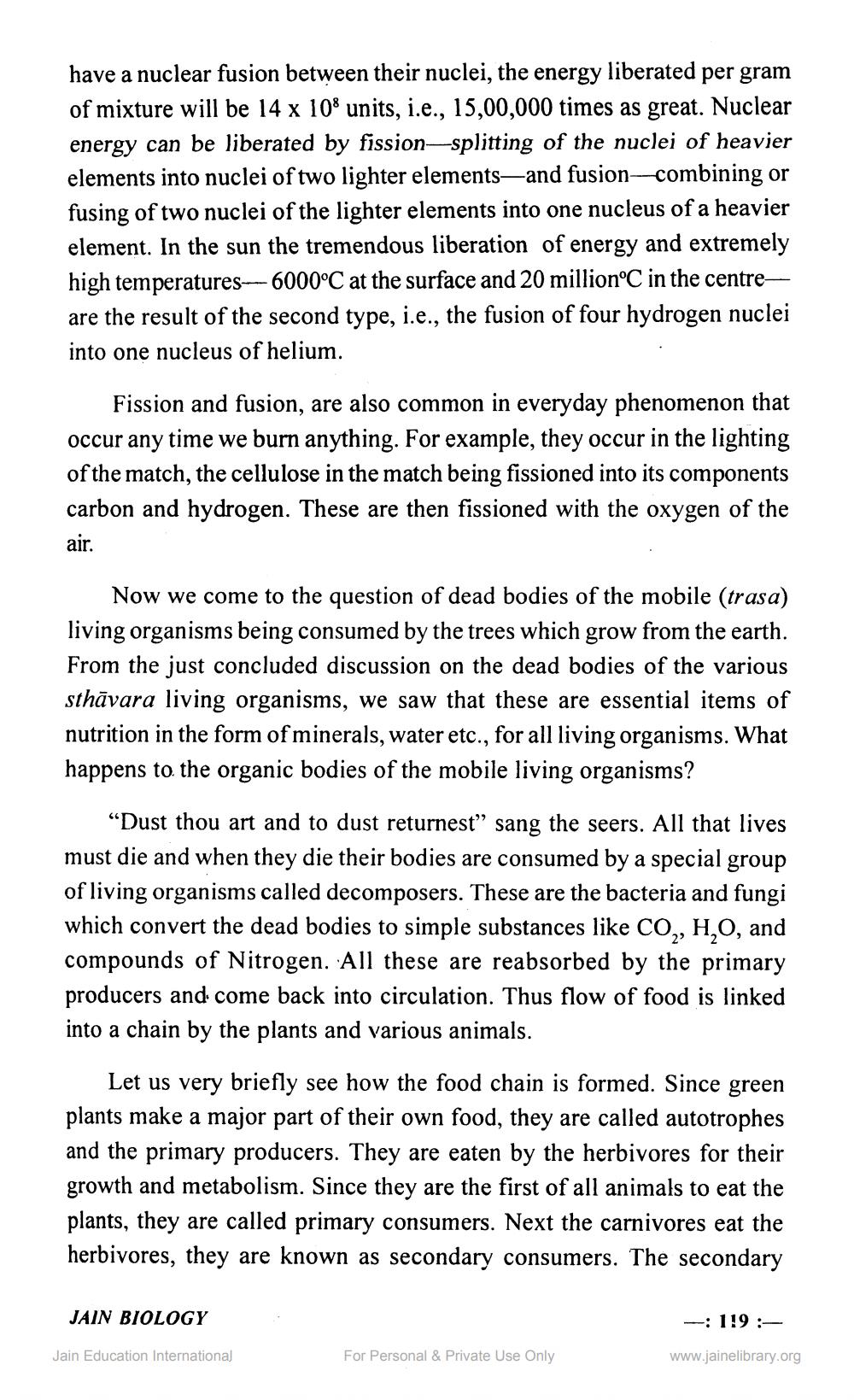________________
have a nuclear fusion between their nuclei, the energy liberated per gram of mixture will be 14 x 108 units, i.e., 15,00,000 times as great. Nuclear energy can be liberated by fission-splitting of the nuclei of heavier elements into nuclei of two lighter elements-and fusion-combining or fusing of two nuclei of the lighter elements into one nucleus of a heavier element. In the sun the tremendous liberation of energy and extremely high temperatures-6000°C at the surface and 20 million°C in the centreare the result of the second type, i.e., the fusion of four hydrogen nuclei into one nucleus of helium.
Fission and fusion, are also common in everyday phenomenon that occur any time we burn anything. For example, they occur in the lighting of the match, the cellulose in the match being fissioned into its components carbon and hydrogen. These are then fissioned with the oxygen of the air.
Now we come to the question of dead bodies of the mobile (trasa) living organisms being consumed by the trees which grow from the earth. From the just concluded discussion on the dead bodies of the various sthāvara living organisms, we saw that these are essential items of nutrition in the form of minerals, water etc., for all living organisms. What happens to the organic bodies of the mobile living organisms?
"Dust thou art and to dust returnest" sang the seers. All that lives must die and when they die their bodies are consumed by a special group of living organisms called decomposers. These are the bacteria and fungi which convert the dead bodies to simple substances like CO2, H2O, and compounds of Nitrogen. All these are reabsorbed by the primary producers and come back into circulation. Thus flow of food is linked into a chain by the plants and various animals.
Let us very briefly see how the food chain is formed. Since green plants make a major part of their own food, they are called autotrophes and the primary producers. They are eaten by the herbivores for their growth and metabolism. Since they are the first of all animals to eat the plants, they are called primary consumers. Next the carnivores eat the herbivores, they are known as secondary consumers. The secondary
JAIN BIOLOGY
Jain Education International
For Personal & Private Use Only
- 119:
www.jainelibrary.org




